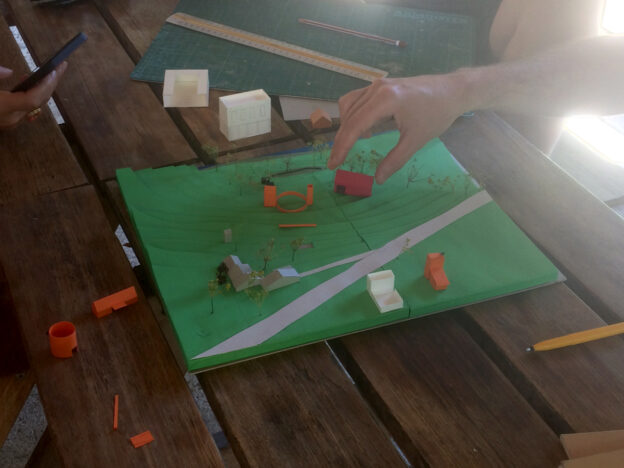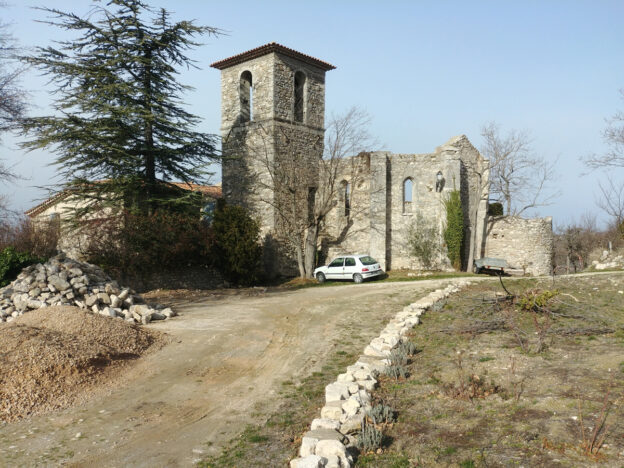Riez is a village that comes alive mostly during the summer period and lacks a cultural life during the other ten months of the year. The patrons wish to create a space that provides a cultural life of quality for rural areas throughout the year.
The Big Top is an artwork linked to Riez’s historical Roman heritage and is a place that will be used to host artistic and cultural events: theatre, dance, cinema, music, conferences and meals.
Its annual operating will be linked with the Cercle des Oiseaux activity in partnership with Le Moulin à Projets, an association created in 2018 to create a living space inspired by the La Borde psychiatric establishment founded by Doctor Jean Oury. Le Moulin à Projets provides a home and structure for adults who no longer need psychiatric hospitalization, but who nevertheless need support in everyday life.
If The Big Top and the Food Truck (operating in July and August for the past two years) are the structural elements of the living space, The Big Top is also a social tool for Riez’s inhabitants and neighbouring municipalities. As such, it must be mobile and easy to dismantle at a reasonable rate.
Assemble Studio responded positively to the commission. Joe Halligan and James Binning are the two architects in charge of the commission.
Patrons: Claudine Aulino, Gaëlle Duplat, Geraldine Manivet, Mademoiselle K
crédits photographiques : DR







